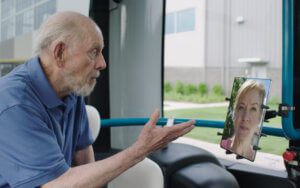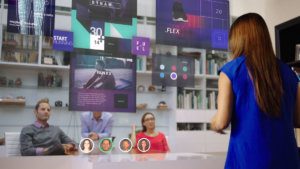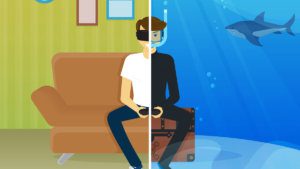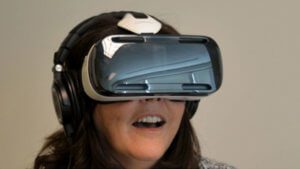video

Tips to Improve Your Home Wi-Fi Performance
March 31, 2020
In response to the Covid-19 outbreak, most people around the world are being asked to stay home. At the same time, they’re going about their daily lives as best as possible under the circumstances. This means that people will be doing more online such as working from home, classroom assignments, calling their friends and watching videos. With more users in the home simultaneously active online, you may be experiencing Wi-Fi overload. Joanna Stern over at […]

Behind the Tech: Connected Healthcare and The Near Future. A Better Place
August 31, 2017
Our short film The Near Future: A Better Place explores how emerging technologies in healthcare will transform our daily lives and allow us to age gracefully in place. We envision a future where embedded IoT devices are able to monitor us anywhere, keeping us safe and healthy longer. These technologies, once thought of as science […]

10 Fun Facts about The Near Future. A Better Place.
August 10, 2017
“Innovate with Purpose” – CableLabs President and CEO Phil McKinney This week at our Summer Conference we released a short a film titled The Near Future. A Better Place. The second in our Near Future series focusing on virtual reality and AI, the film highlights how our broadband networks and increased connectivity in the home […]

CableLabs Loves Pedal Power: Our Bike to Work Day Story
June 14, 2017
It’s that time of year again! While most of the country celebrates Bike to Work Day in May, Colorado waits for the snow to melt and designates every June as Bike to Work Month and June 28th, 2017 as #BikeToWorkDay. Whether you bike for health, to get to work, preserve the environment, or simply for […]

A Look into the Near Future
August 8, 2016
CableLabs has done something surprising for an Innovation and R&D Lab. They have released a short film that provides a vision of possibilities arising from the high speed low latency networks that will connect our homes, businesses and mobile devices in the not too far distant future. Portraying a number of vignettes in the life […]

The Cost of Codecs: Royalty-Bearing Video Compression Standards and the Road that Lies Ahead
February 1, 2016
Since the dawn of digital video, royalty-bearing codecs have always been the gold standard for much of the distribution and consumption of our favorite TV shows, movies, and other personal and commercial content. Since the early 90’s, the Moving Picture Expert Group (MPEG) has defined the formats and technologies for video compression that allow all […]

Who Will Win The Race For Virtual Reality Content?
October 1, 2015
This is the second of a series of posts on Virtual Reality technology by Steve and others at CableLabs. You can find the first post here. In the recent study we performed at CableLabs, we asked what would stop people from buying a virtual reality headset. High on the list of items was availability of […]

Is Virtual Reality the Next Big Thing?
September 8, 2015
In the Advanced Technology Group at CableLabs I get to play with all the best toys, trying to work out what is a challenge or an opportunity, and what is a flop waiting to be unwrapped. 3D is a great case study. I first got to work with 3D TV in 1995 (in a prior […]

Content Creation Demystified: Open Source to the Rescue
June 9, 2015
There are four main concepts involved in securing premium audio/visual content: Authentication Authorization Encryption Digital Rights Management (DRM) Authentication is the act of verifying the identity of the individual requesting playback (e.g. username/password). Authorization involves ensuring that individual’s right to view that content (e.g. subscription, rental). Encryption is the scrambling of audio/video samples; decryption keys […]

Web Media Playback: Solved with dash.js
June 2, 2015
(Disclaimer: the author is a regular contributor to the dash.js project) A crucial piece of any standards development process is the creation of a reference implementation to validate the feasibility of the many requirements set forth within the standard. After all, it makes no sense to create a standard if it is impossible to create […]